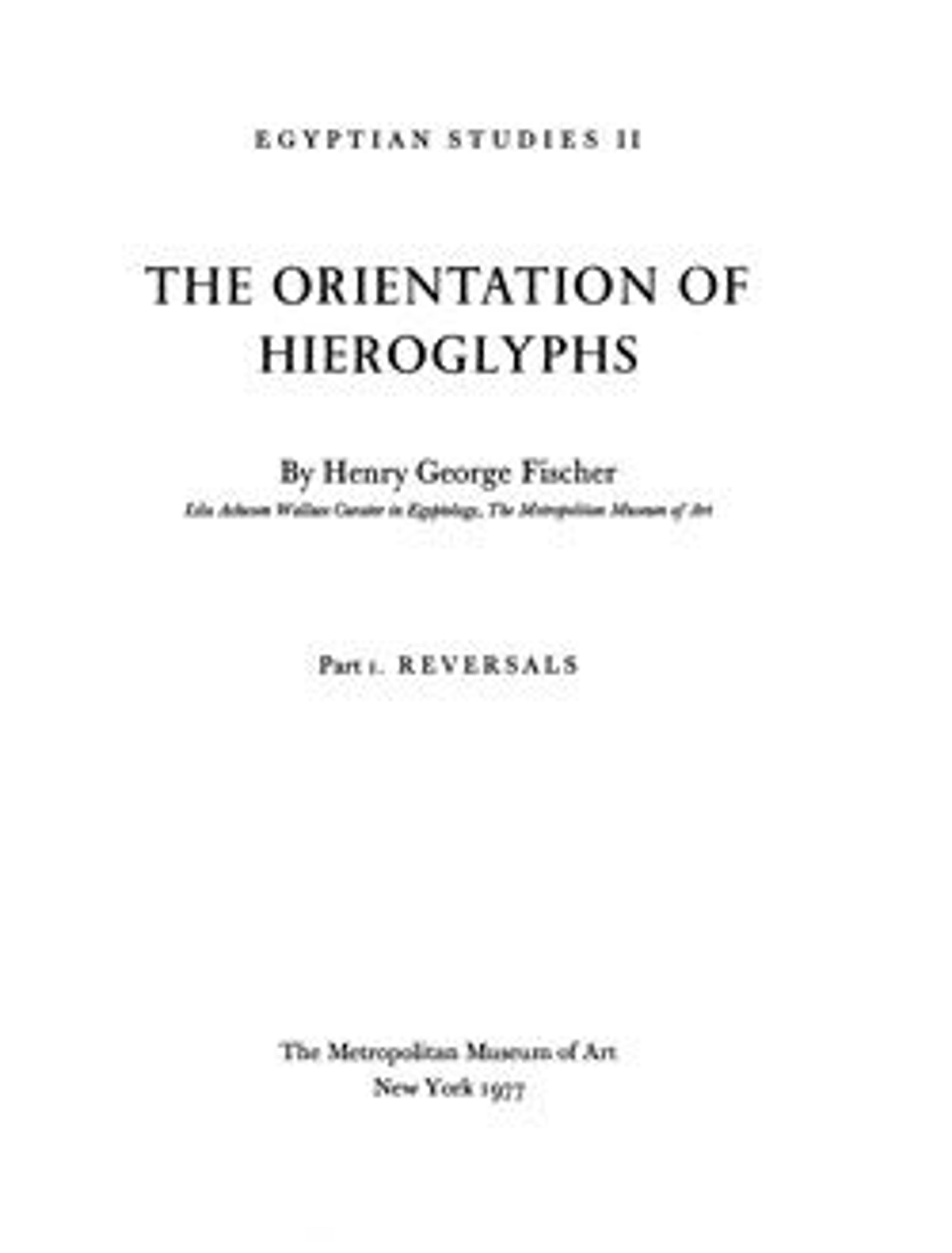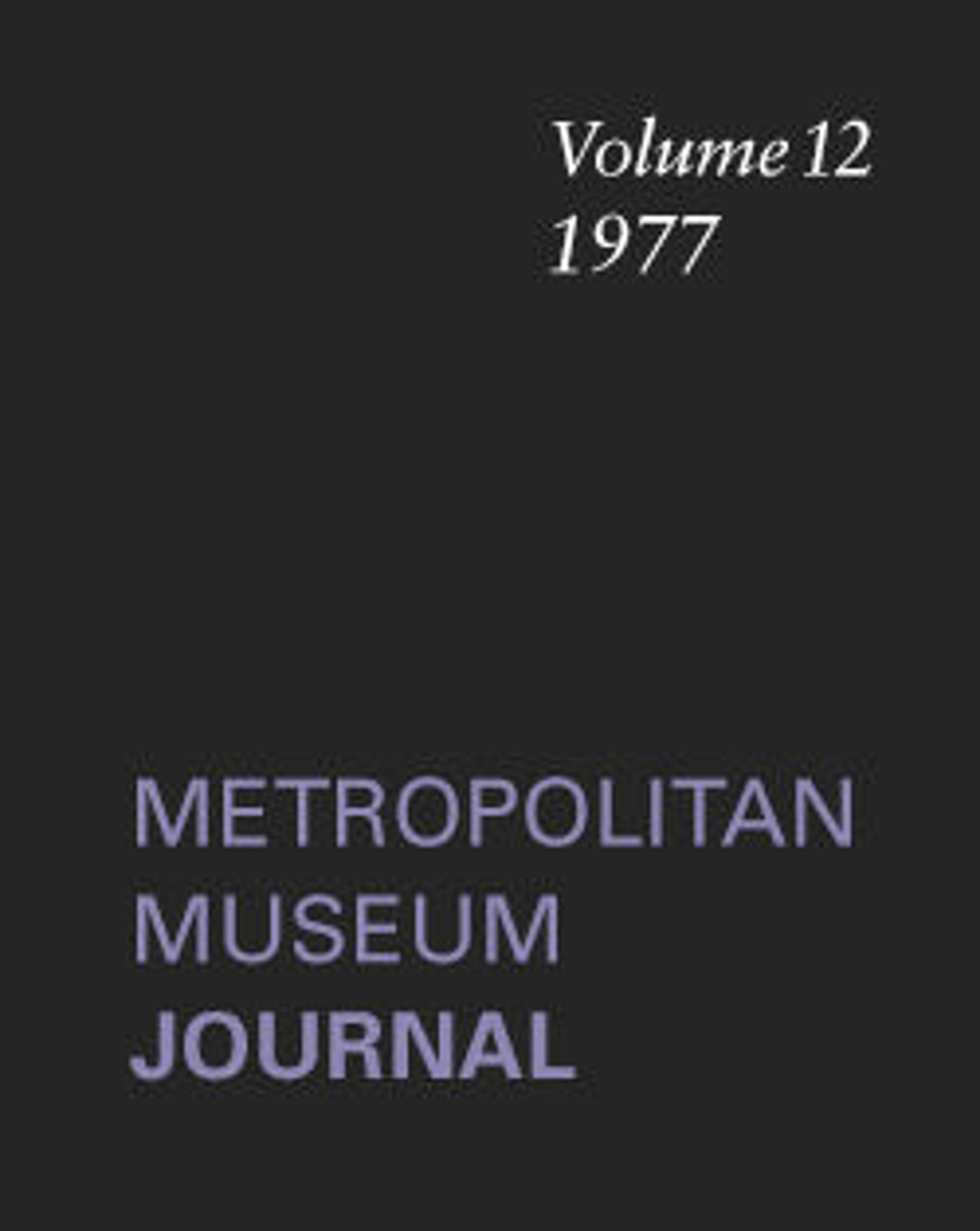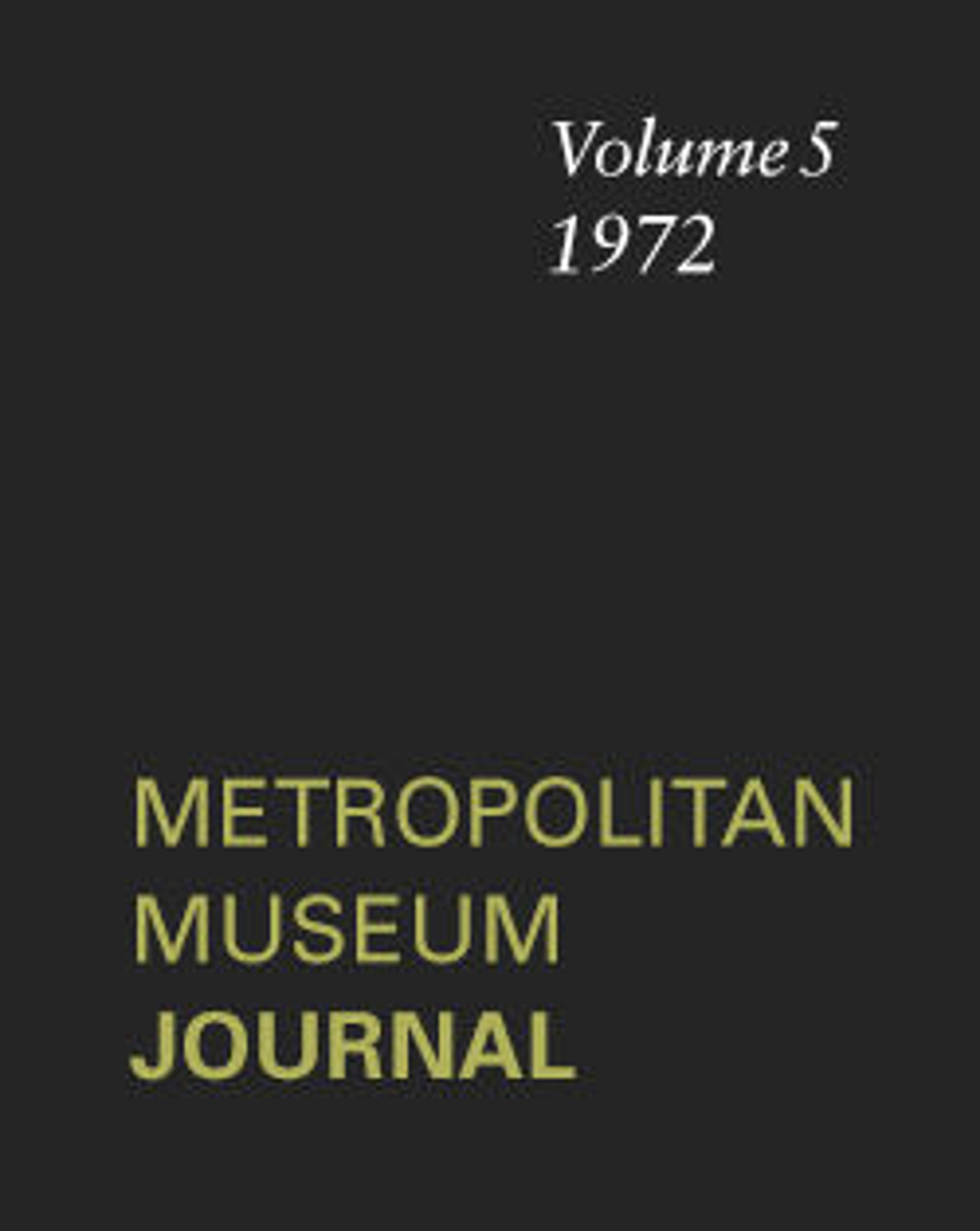
The Orientation of Hieroglyphs. Part 1, Reversals
Preface
List of Illustrations
Abbreviations and Symbols
I. Normal Reversals (1–19)
A. The Logic of Orientation
1. Logicality
2. The unity of art and writing
3. The arrow indicating orientation
4. Dominant rightward orientation
5. Three reasons for reversal of orientation
B. Confrontation
6. Hieroglyphic examples independent of scenes
C. Symmetry
7. Symmetrical Reversals
D. Concordance
8. The normal situation
9. Retention of rightward orientation
10. Noncontiguous concordance
11. The fronts and backs of portable objects
12. Fronts and backs of stelae
13. Ramesside stelae
14. Obelisks
15. Sides of statues
16. Backs of statues
17. Pendants and pectorals
18. Coffins and sarcophagi
19. Temples
II. Vocative Reversals (20–23)
20. Reversed statements
21. Reversal of "dd.f" preceding a statement
22. Reversal of "wd–nswt"
23. A comparison of these reversals
III. Concordant Reversals Within a Single Line (22–37)
24. An overview
A. Reversal of subject (offerings)
25. Offering lists and formulae
26. An Old Kingdom list of estates
27. Viewing of a presentation
28. Performance of funerary ritual
B. Reversal of object
29. Singing "to" musical accompaniment or dancing
30. Animals giving birth
31. Destination
C. Reversals relating to divinities
32. Reversal of the epithet "mry" "beloved (of)" as applied to the king
33a. Reversal of divine names
33b. Reversal of the terminal phrase in ritual captions
D. Other concordant reversals
34. Emphasis of various elements
35. Emphasis on shifting direction
36. A divided action
37. Some possible exceptions
IV. Reversal of Individual Hieroglyphs (38–45)
38. Real or apparent anomalies
39. The sign (Gardiner's P5)
40. The sign (Gardiner's P2)
41. Writings of "smt iwt" "going and coming"
42. Writings of "'k prt"entering and coming forth"
43. Orientation of (Gardiner F23) and (Gardiner's F24)
44. Reversed "wsn"
45. The sign (Gardiner's S43), a walking stick
V. Chronological Synopsis (46–53)
46. A constant potential
47. The Archaic Period
48. The Old Kingdom
49. The Heracleopolitan Period
50. The Middle Kingdom
51. The Second Intermediate Period
52. The Early New Kingdom
53. The Ramesside Period
Appendix
MMA 65.114 (Figs. 32, 125)
LD Text I, p. 127 (Fig. 55)
Cairo CG 1431 (Figs. 58, 59)
Cairo CG 20513 (Figs. 70, 126)
Met Art in Publication
You May Also Like
Press the down key to skip to the last item.




